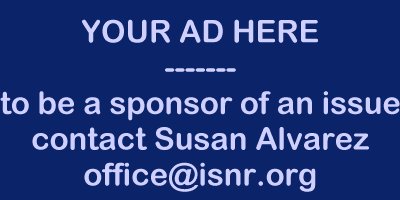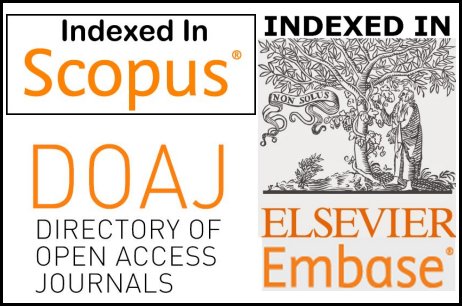Biofeedback and Anger Management: A Literature Review
DOI:
https://doi.org/10.15540/nr.5.1.43Keywords:
Biofeedback, anger, emotional regulationAbstract
The purpose of this article was to systematically review the literature on the effects of biofeedback therapy on anger. Biofeedback methods are shown to be effective in the treatment of a number of health conditions; however, a systematic review of biofeedback therapies on anger management has yet to be conducted. Results of the literature review show that little attention was given to anger over the years in comparison to other health and emotional conditions. Research is needed to determine whether biofeedback is an efficacious treatment for emotional regulation.
References
AskMayoExpert. (2015). Biofeeedback. Rochester, MN: Mayo Foundation for Medical Education and Research.
Baigis-Smith, J., Smith, D. A. J., Rose, M., & Newman, D. K. (1989). Managing urinary incontinence in community-residing elderly persons. The Gerontologist, 29(2), 229–233. http://dx.doi.org/10.1093/geront/29.2.229
Berenbaum, H., Raghavan, C., Le, N. H., Vernon, L. L., & Gomez, J. J. (2003). A taxonomy of emotional disturbances. Clinical Psychology: Science and Practice, 10(2), 206–226. http://dx.doi.org/10.1093/clipsy/bpg011
Carlson, J. G., Singelis, T. M., & Chemtob, C. M. (1997). Facial EMG responses to combat-related visual stimuli in veterans with and without posttraumatic stress disorder. Applied Psychophysiology and Biofeedback, 22(4), 247–259. http://dx.doi.org/10.1023/A:1022295912624
Chapman, C. J. (2017). Biofeedback intervention for anger management: A case study. NeuroRegulation, 4(2), 95–98. http://dx.doi.org/10.15540/nr.4.2.95
Corder, B. F., Whiteside, R., & Haizlip, T. (1986). Biofeedback, cognitive training and relaxation techniques as multimodal adjunct therapy for hospitalized adolescents: A pilot study. Adolescence, 21(82), 339–346.
Del Vecchio, T., & O'Leary, K. D. (2004). Effectiveness of anger treatments for specific anger problems: A meta-analytic review. Clinical Psychological Review, 24(1), 15–34. http://dx.doi.org/10.1016/j.cpr.2003.09.006
Ducharme, P., Wharff, E., Hutchinson, E., Kahn, J., Logan, G., & Gonzalez-Heydrich, J. (2012). Videogame assisted emotional regulation training: An ACT with RAGE-Control case illustration. Clinical Social Work Journal, 40(1), 75–84. http://dx.doi.org/10.1007/s10615-011-0363-0
Engel, J. M., & Rapoff, M. A. (1990). Biofeedback-assisted relaxation training for adult and pediatric headache disorders. The Occupational Therapy Journal of Research, 10(5), 283–299. http://dx.doi.org/10.1177/153944929001000504
Faedda, N., Cerutti, R., Verdecchia, P., Migliorini, D., Arruda, M., & Guidetti, V. (2016). Behavioral management of headache in children and adolescents. The Journal of Headache and Pain, 17(1), 80. http://dx.doi.org/10.1186/s10194-016-0671-4
Fishbain, D. A., Goldberg, M., Khalil, T. M., Asfour, S. S., Abdel-Moty, E., Meager, B. R., … Rosomoff, H. L. (1988). The utility of electromyographic biofeedback in the treatment of conversion paralysis. The American Journal of Psychiatry, 145(12), 1572–1575. http://dx.doi.org/10.1176/ajp.145.12.1572
Frank, D. L., Khorshid, L., Kiffer, J. F., Moravec, C. S., & McKee, M. G. (2010). Biofeedback in medicine: Who, when, why and how? Mental Health in Family Medicine, 7(2), 85–91.
Glombiewski, J. A., Hartwich-Tersek, J., & Rief, W. (2010). Two psychological interventions are effective in severely disabled, chronic back pain patients: A randomised controlled trial. International Journal of Behavioral Medicine, 17(2), 97–107. http://dx.doi.org/10.1007/s12529-009-9070-4
Golden, W. L., & Consorte, J. (1982). Training mildly retarded individuals to control their anger through the use of cognitive-behavior therapy techniques. Journal of Contemporary Psychotherapy, 13(2), 182–187. http://dx.doi.org/10.1007/BF00946355
Greenspoon, J., & Olson, J. (1986). Stress management and biofeedback. Clinical Biofeedback & Health: An International Journal, 9(2), 65–80.
Hawkins, R. S., & Hart, A. D. (2003). The use of thermal biofeedback in the treatment of pain associated with endometriosis: Preliminary findings. Applied Psychophysiology and Biofeedback, 28(4), 279–289. http://dx.doi.org/10.1023/A:1027378825194
Kahn, J., Ducharme, P., Rotenberg, A., & Gonzalez-Heydrich, J. (2013). “Rage-Control”: A game to build emotional strength. Games for Health Journal, 2(1), 53–57. http://dx.doi.org/10.1089/g4h.2013.0007
Levey, S., & Howells, K. (1990). Anger and its management. Journal of Forensic Psychiatry, 1, 305–327. http://dx.doi.org/10.1080/09585189008408480
Lundervold, D. A., & Poppen, R. (1995). Biobehavioral rehabilitation for older adults with essential tremor. The Gerontologist, 35(4), 556–559.
Maiuro, R. D., Cahn, T. S., Vitaliano, P. P., Wagner, B. C., & Zegree, J. B. (1988). Anger, hostility, and depression in domestically violent versus generally assaultive men and nonviolent control subjects. Journal of Consulting and Clinical Psychology, 56(1), 17–23. http://dx.doi.org/10.1037/0022-006X.56.1.17
Maiuro, R. D., & Eberle, J. A. (1989). New developments in research on aggression: An international report. Violence and Victims, 4(1), 3–15.
Mayo Clinic. (2016). Biofeeedback. Rochester, MN: Mayo Foundation for Medical Education and Research.
McLay, R. N., & Spira, J. L. (2009). Use of a portable biofeedback device to improve insomnia in a combat zone, a case report. Applied Psychophysiology and Biofeedback, 34(4), 319–321. http://dx.doi.org/10.1007/s10484-009-9104-3
Nicholson, N. L., & Blanchard, E. B. (1993). A controlled evaluation of behavioral treatment of chronic headache in the elderly. Behavior Therapy, 24(3), 395–408. http://dx.doi.org /10.1016/S0005-7894(05)80213-8
Nordqvist, J. (2017). What is biofeedback therapy and who can benefit? Medical News Today. Retrieved from http://www.medicalnewstoday.com/articles/265802.php
Prinsloo, G. E., Derman, W. E., Lambert, M. I., & Rauch, H. G. L. (2013). The effect of a single session of short duration biofeedback-induced deep breathing on measures of heart rate variability during laboratory-induced cognitive stress: A pilot study. Applied Psychophysiology and Biofeedback, 38(2), 81–90. http://dx.doi.org/10.1007/s10484-013-9210-0
Sarafino, E. P., & Goehring, P. (2000). Age comparisons in acquiring biofeedback control and success in reducing headache pain. Annals of Behavioral Medicine, 22(1), 10–16. http://dx.doi.org/10.1007/BF02895163
Schwartz, M. S. (1995). Biofeedback: A practitioner’s guide (2nd ed.). New York, NY: Guilford Press.
Sharkin, B. S. (1988). The measurement and treatment of client anger in counseling. Journal of Counseling & Development, 66(8), 361–365. http://dx.doi.org/10.1002/j.1556-6676.1988.tb00887.x
Shellenberger, R. D., Turner, J., Green, J., & Cooney, J. B. (1986). Health changes in a biofeedback and stress management program. Clinical Biofeedback & Health: An International Journal, 9(1), 23–34.
Vaschillo, E. G., Vaschillo, B., & Lehrer, P. M. (2006). Characteristics of resonance in heart rate variability stimulated by biofeedback. Applied Psychophysiology and Biofeedback, 31(2), 129–142. http://dx.doi.org/10.1007/s10484-006-9009-3
Wyner, D. R. (2015). Pilot study of a university counseling center stress management program employing mindfulness and compassion-based relaxation training with biofeedback. Biofeedback, 43(3). 121–128. http://dx.doi.org/10.5298/1081-5937-43.3.01
Downloads
Published
Issue
Section
License
Authors who publish with this journal agree to the following terms:- Authors retain copyright and grant the journal right of first publication with the work simultaneously licensed under a Creative Commons Attribution License (CC-BY) that allows others to share the work with an acknowledgement of the work's authorship and initial publication in this journal.
- Authors are able to enter into separate, additional contractual arrangements for the non-exclusive distribution of the journal's published version of the work (e.g., post it to an institutional repository or publish it in a book), with an acknowledgement of its initial publication in this journal.
- Authors are permitted and encouraged to post their work online (e.g., in institutional repositories or on their website) prior to and during the submission process, as it can lead to productive exchanges, as well as earlier and greater citation of published work (See The Effect of Open Access).










